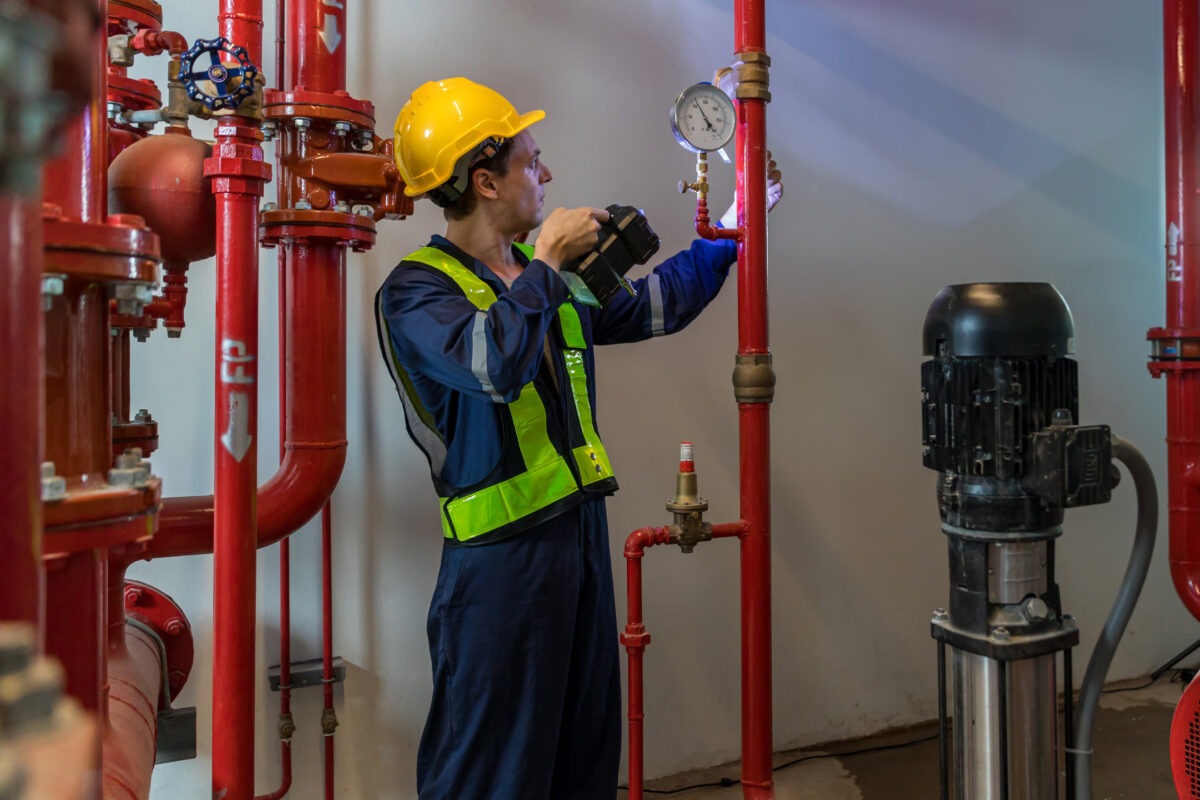The “4 Ps of risk assessment—Predict, Prevent, Prepare, and Protect—takes on a heightened significance in environments where the potential for severe and costly risks is ever-present.
Effective risk assessment is paramount to ensure safety,
operational continuity, and environmental responsibility.
In this article, we will explore how this framework applies in high-risk sectors, delving into methodologies and real-world applications.
Predict

Predicting risks is the first step in the risk assessment process, and is a cornerstone for proactive risk management.
Predicting risks in high-risk industries involves identifying and analyzing potential hazards and evaluating their probability and potential consequences.
These industries are marked by complex operational environments where the stakes are exceptionally high.
Methodologies for Predicting Risks
Predicting risks involves the following:
- Hazard Identification: Rigorous identification of potential hazards in operational processes and systems.
- Risk Modeling: Using advanced computational models to simulate and forecast potential risk scenarios.
- Failure Modes and Effects Analysis (FMEA): A systematic approach to assessing failure modes and their consequences.
- Expert Opinion: Gathering insights from subject matter experts to predict risks.
Real-World Application of Risk Prediction
In the oil and gas sector, predicting risks might entail evaluating equipment failure probabilities, pipeline corrosion rates, and seismic activity to anticipate potential incidents and their impact on operations and the environment.
How FAT FINGER can help you predict risks
You can perform historical data analysis and build statistical models with data collected from past incidents and trends to identify patterns, predict future outcomes and potential risks.
Prevent
Once you predict a risk, the next step is risk prevention.
Preventing risks involves implementing measures to reduce the likelihood or severity of potential threats. Prevention strategies are tailored to specific risks and may vary significantly depending on the nature of the risk.
Methodologies for Risk Prevention
Risk prevention methods include:
- Risk Mitigation Planning: Developing strategies to reduce the likelihood of a risk occurring.
- This might involve implementing engineering controls, safety features and redundancy in critical systems.
- Regulatory Compliance: Adhering to stringent safety and environmental regulations.
- Continuous Improvement: Regularly evaluating and refining safety protocols based on lessons learned from near-miss incidents.
- Education and Training: Providing information and training to individuals or organizations to mitigate risks effectively.

Real-World Application of Risk Prevention
High risk sectors often rely on highly regulated safety protocols and innovative engineering solutions to mitigate risks.
In the manufacturing industry, prevention strategies might include machine guarding, safety interlocks, and rigorous safety training to minimize the risk of workplace accidents.
How can you prevent risks with FAT FINGER?
You can use FAT FINGER to implement safety protocols such as Take 5 Safety or JHA/JSA, or reduce unplanned downtime with preventive maintenance checklists.
Prepare

Despite your best efforts, risks may still materialize. Preparedness involves developing comprehensive emergency response plans, allocating resources, and ensuring personnel are well-trained to react swiftly and efficiently when risks become realities.
Risk Preparation Methodologies
You can prepare for risks in the following ways:
- Emergency Response Planning: Establishing clear, well-documented procedures for responding to various risk scenarios.
- Resource Allocation: Ensuring essential resources such as emergency equipment and personnel are readily available.
- Simulation and Drills: Conducting realistic simulations and drills to train personnel for emergency responses.
Real-World Example of Risk Preparation
In mining operations, preparedness involves having well-defined evacuation procedures, access to underground refuge chambers, and training workers to respond to mine collapses or hazardous gas leaks.
Protect
The final ‘P’ in risk assessment is “Protect.” Protection involves safeguarding assets, people, and critical systems during and after a risk event. This involves real-time risk monitoring, swift incident response to minimize damage, and effective recovery strategies.
Risk Protection Methodologies
You can safeguard your workplace against risks by doing the following:
- Risk Monitoring: Utilizing advanced monitoring systems, sensors, and data analytics to track potential risks in real-time.
- Incident Response Teams: Establishing specialized teams trained to handle emergencies swiftly and effectively.
- Business Continuity Planning: Developing strategies to recover and restore operations post-incident.
Real-World Application of Risk Protection
In the engineering sector, protection may entail real-time structural health monitoring of bridges and buildings

to detect and respond to structural weaknesses, ensuring public safety.
How can you protect against risks with FAT FINGER?
You can build workflows in FAT FINGER to manage emergency shutdown during an incident, and to monitor incidents in real time.
Implement the 4 Ps of Risk Assessment with FAT FINGER

The “4 Ps” model—Predict, Prevent, Prepare, and Protect—serves as a foundational framework for risk assessment and management.
These industries operate within complex and hazardous environments, making proactive and thorough risk assessment essential.
With FAT FINGER, you can integrate these four P’s of risk assessment and management in your organization, and enhance safety, maintain operational integrity, and meet environmental responsibilities.
Sign up for FAT FINGER and enjoy
- An easy-to-use, no-code, drag and drop interface
- Reliable data collected in real time
- Building safety workflows within minutes
- Real-time collaboration through instant communication between you your team


